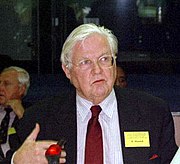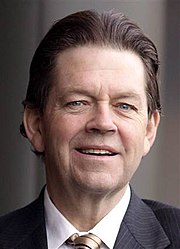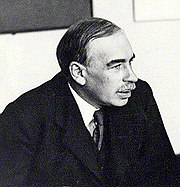_
Currently the two main competing economic schools of thought are Keynesian and Supply-Side (sometimes called "trickle down") economics.
Keynesian
Read this article on http://www.wikiwand.com/en/Keynesian_economics Wikipedia: "Keynesian Economics", which covers several aspects of contemporary macroeconomic thinking. Note the emphasis on managing aggregate demand by changing variables that can alter aggregate expenditures. Some economists argue it is easier and better to prompt changes in consumption, investment, government spending, and net exports than to prompt changes in variables that affect aggregate supply.
Supply-Side

Robert Mundell: a key proponent of Supply-Side

Arthur Laffer: a key proponent of Supply-Side
Read this article from Wikipedia about "Keynesian Economics", which covers several aspects of contemporary macroeconomic thinking. Note the emphasis on managing aggregate supply by changing variables including tax rates, deregulating industries, providing incentives for employers to hire workers, and so forth. Some economists argue it is easier and better to prompt changes in the supply side than to prompt changes in variables that affect aggregate demand.
Having read these two articles, take a moment to write down your thinking on these two approaches to economic thought and, ultimately, economic policy in a WeNotes post.


